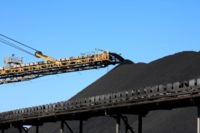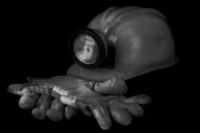 The U.S. Department of Labor's Mine Safety and Health Administration (MSHA) today announced that federal inspectors issued 226 citations and orders during special impact inspections conducted at eight coal mines and three metal/nonmetal mines last month. The coal mines were issued 145 citations and 18 orders, while the metal/nonmetal operations were issued 51 citations and 12 orders.
The U.S. Department of Labor's Mine Safety and Health Administration (MSHA) today announced that federal inspectors issued 226 citations and orders during special impact inspections conducted at eight coal mines and three metal/nonmetal mines last month. The coal mines were issued 145 citations and 18 orders, while the metal/nonmetal operations were issued 51 citations and 12 orders.
These inspections, which began in force in April 2010 following the explosion at the Upper Big Branch Mine, involve mines that merit increased agency attention and enforcement due to their poor compliance history or particular compliance concerns, including high numbers of violations or closure orders; frequent hazard complaints or hotline calls; plan compliance issues; inadequate workplace examinations; a high number of accidents, injuries or illnesses; fatalities; and adverse conditions such as increased methane liberation, faulty roof conditions and inadequate ventilation.
One of MSHA's most recent impact inspections was on Oct. 31 at Bledsoe Coal Corp.'s Abner Branch Rider Mine in Leslie County, Ky. Upon arrival, the inspection team captured and monitored the mine phone to prevent advance notification. Inspectors observed loose, unsupported drawrock and loose coal ribs, which can cause serious injury or death to miners. Consequently, they issued two withdrawal orders for inadequate roof and rib control. Withdrawal orders also were issued for combustible material accumulations as well as the operator's failure to conduct a pre-shift examination of the active section, which resulted in electrical equipment and cables being energized in the presence of roof control and ventilation hazards, creating a potential fire or explosion hazard. The mine operator was issued a total of five withdrawal orders and two citations.
In April 2011, the Abner Branch Rider Mine became one of two mines ever successfully placed by MSHA on a pattern of violations, based on the operator's repeated significant and substantial violations of mandatory health and safety standards. The withdrawal orders issued based on last month's inspection, which require all individuals to be withdrawn from the affected area until each violation has been abated, bring the mine's total number of withdrawal orders received since April to 34.
"The conditions at the Abner Branch Rider Mine underscore the importance of adequate pre-shift examinations, which require hazards to be found and fixed to prevent miners from being harmed," said Joseph A. Main, assistant secretary of labor for mine safety and health. "There is no excuse for miners to be exposed to these conditions when a pre-shift inspection would have identified the hazards. I'm especially troubled that these conditions exist at a mine already on a pattern of violations."
As a second example from last month, MSHA conducted an impact inspection on Oct. 13 at Viper Coal LLC Mine No. 7 in Pike County, Ky. The inspection party arrived at the mine site and immediately seized the communication system. Eight unwarrantable failure orders and 12 citations were issued. One of the orders was issued for mining coal in excess of the 20-foot maximum cut depth stipulated in the operator's approved roof control plan. Additionally, drawrock was present throughout the working section and exposed miners to roof falls that could cause serious injury or death.
Unwarrantable failure orders also were issued for failure to conduct an on-shift examination to ensure compliance with the respirable dust control parameters and for ventilation deficiencies that did not comply with the approved ventilation plan, as well as for inadequate on-shift/preshift examinations of the belt lines, which led to the buildup of combustible material. At the time of the inspection, the mine was using blowing ventilation, when the approved ventilation plan called for exhausting ventilation. This disregard for the approved plan resulted in a drastic reduction in airflow, well below the minimum required by law. Furthermore, the operator failed to maintain water sprays on the continuous mining machine to suppress dust.
Since April 2010, MSHA has conducted 358 impact inspections, which have resulted in 6,383 citations, 614 orders and 22 safeguards.

